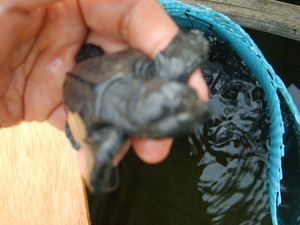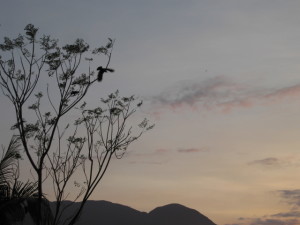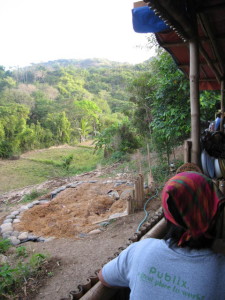My favorite turtle encounter happened just last year, around December. I was assisting in a checkout dive in Anilao, Batangas, documenting it and standing by as rescue diver.
When you’re a rescue diver, you’re always at the back and further out away from the reef where it’s more dangerous. This usually means I miss seeing a lot of creatures during a dive — they’ve swam away by the time I get to them.
Not on this one though. The turtle cut in front of me and for more than a minute, I was next to it. It was oblivious of me — which was awesome! It felt like I got so close.
This one’s a hawksbill marine turtle, one of three sea turtle species that nest in the Philippines as well as swim in our waters. Along with the green sea turtle, it nests all over the country, year-round. The Olive Ridley, on the other hand, only nests in Bataan, Zambales and Batangas from August to September.
Sea turtles are endangered, as we all know. They are poached for food, and their shell, leather and oil. They also fall victim to destructive fishing practices, such as trawling and long line fishing. Climate change, pollution and coastal development are affecting their mating, nesting and marine habitat.

It’s a good thing that there are several NGOs that try to save the marine turtle population. The Bantay Pawikan, Inc. in Morong, Bataan is a great example of a community-based conservation program. They run the Pawikan Conservation Center in Morong, a nesting beach for turtles. In the past, locals harvested the eggs for food or to sell. Now, they gathered unhatched eggs to protect them from predators (including man). When hatched and ready, turtles are released back to the sea.
And it is important that we do our part to save marine turtles — not just because they’re cute. Turtles are primary examples of how we are all connected. They are keystone creatures. Their presence determines the make up of a marine environment, which species there’ll be more of. They control the jellyfish population because they eat them. They keep sea grass beds healthy, which then affects species that are dependent on healthy seabed grass. We harvest some of these species for food, medicine and the like.
So, saving sea turtles is not just an environmentalist’s mantra. Environmentalist or not, we need for turtles to stick around longer if we want to preserve our quality of life.
And the littlest things that we can do — the “green” choices that we make — matter. As Crush would say: “Gimme some fin!”
To read up some more, check out these links:
Pawikan Conservation Center
Sea Turtle Conservation Bonaire
Philippine Clearing House Mechanism for Biodiversity
 Yesterday, circumstances made me take a look around, at my stuff, to see what I can pack inside my backpack. My mind wandered to a life lived on the road. Jumping from beachside to beachside, that’s the dream.
Yesterday, circumstances made me take a look around, at my stuff, to see what I can pack inside my backpack. My mind wandered to a life lived on the road. Jumping from beachside to beachside, that’s the dream.


